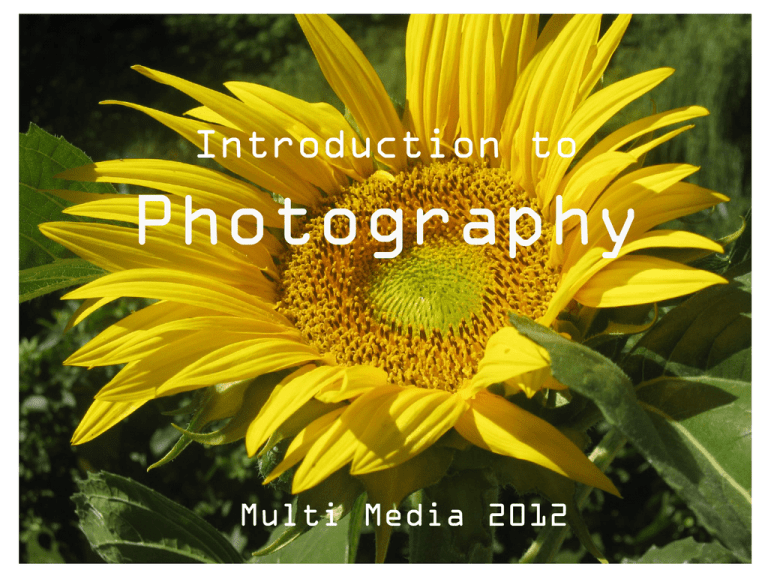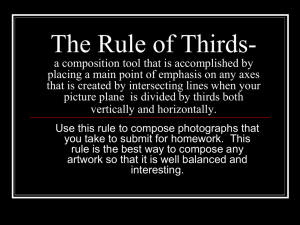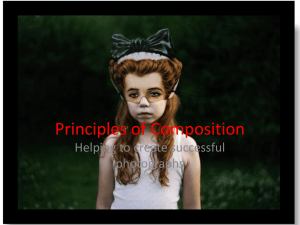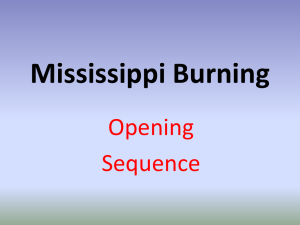Introduction to Photography
advertisement

Introduction to Photography Multi Media 2012 Rule Of Thirds The Rule Of Thirds is based on the fact that the eye is naturally drawn to a point about two thirds up a page. The picture is divided into 9 equal sections by 2 horizontal and 2 vertical lines. The subject, or the most significant parts of your photograph, is positioned along any of these lines preferably in the points where the lines intersect. The Diagonal Rule The Diagonal Rule states that a photograph looks more dynamic if the objects fall or follow a diagonal line. The diagonal line doesn't have to be an actual line and it doesn't have to be a straight one. It could be the edges of a river, the top of a forest, or even an imaginary line connecting the different objects in the scene. By placing natural elements that form a line along these diagonal guides makes the picture more pleasing and dynamic. If there are no imaginary or real diagonal lines that can be seen within a scene, sometimes a simple change of position or elevation is enough to produce a useful angle on the objects in the scene. A sufficient amount of Perspective Distiortion from a wide angle lens may also help. Leading Lines Leading Lines are lines or objects that make up a line within a scene that is used to direct the attention of the viewer. Use leading lines to draw the viewer's eye through the photograph towards the subject or the area which is the most significant in the scene. Look for any natural or man-made structure within the scene such as roads, shadows, edges of a cliff, or buildings that can be used to point towards the subject. The lines may start anywhere from outside of the photograph but the most effective leading lines are those that start somewhere in the bottom and flows towards the main subject. The lines may be straight or curved. Straight lines produce a rather aggressive and dynamic effect while curve lines gives the picture a more gentle and calm feel. “S” Curve Another dynamic composition tool is to include a “S” curve. As the name suggests, a major element of the composition would be an object such as a stream, path, railing, or other curved object that creates an “S.” • If the S is right facing and starts in the lower left corner and exits the upper right corner – the feeling for most English speaking people is that the picture is moving away from the viewer. • If the “S” is reversed, and starts in the upper left corner coming down to the lower right, the picture seems to be coming towards the viewer. This effect is from, I believe, learning to read left to right. Balance There are a few ways to achieve balance in photos. • The first is through symmetry – where you have equal size subjects on either side of the photo. This creates a static, solid look with little movement. The second is to place dissimilar size objects on either side, but to use the center of the photo as a balance point in an asymmetrical composition. If you have a grouping of objects on one side, you’ll need something further out on the other side to create balance. An asymmetrical composition creates a sense of movement and action, even if the subject is a stone. Positive and Negative Space • The primary subject of your photo, a person, building, toy car… is the “positive space.” • Negative space is everything else. Negative Space Positive Space BTW • Something you see in a lot of photography is things sticking out of heads, wires across the scene you didn’t see when taking the picture, and so on. This is just from paying so much attention to the subject that photographers forget what is in the background or surrounding the subject.











